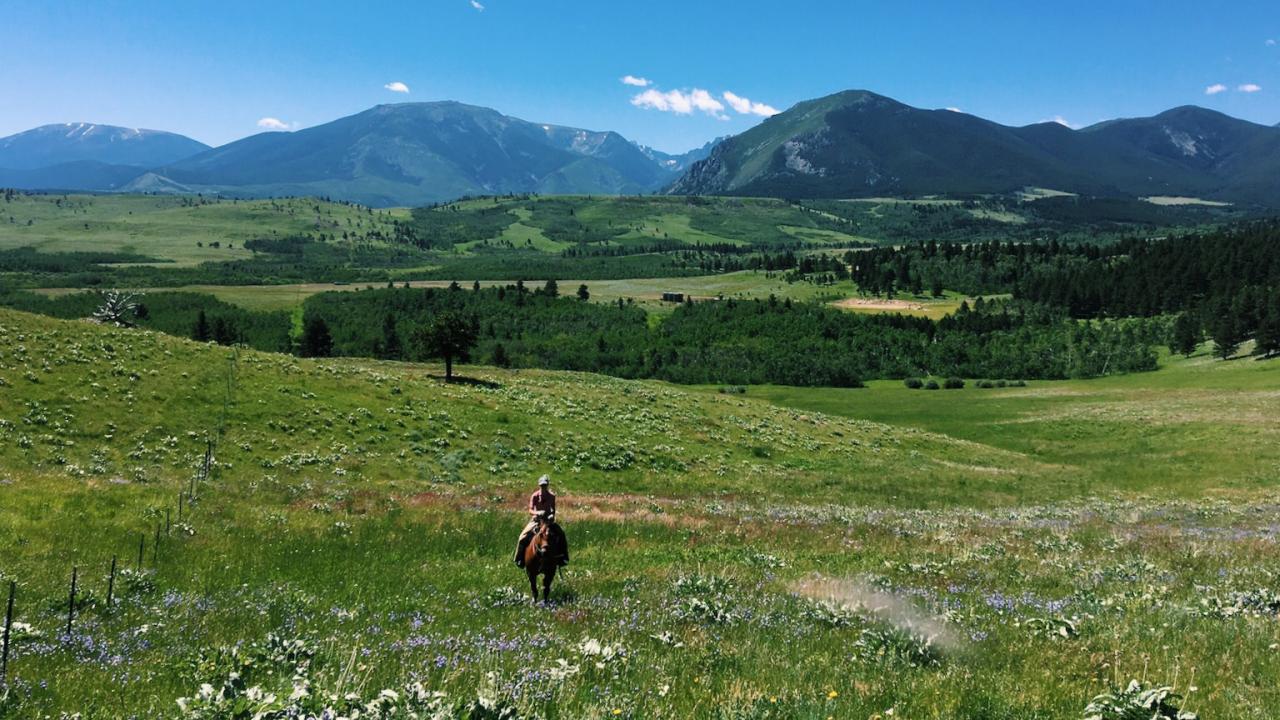
Change on the Range
First-generation ranchers help preserve California rangelands
A new breed of ranchers is bringing diverse demographics and unique needs to rangeland management in California. These first-generation “ranchers” are often young, female and less likely to, in fact, own a ranch. But like more traditional rangeland managers, this new generation holds a deep love for the lifestyle and landscapes that provide a wealth of public benefit to California and the world.
“When first-generation ranchers succeed, we all succeed,” says Kate Munden-Dixon, a Ph.D. student addressing sustainable agriculture issues under the guidance of human ecology professor Ryan Galt. In this rangeland-management project, Munden-Dixon is collaborating with Leslie Roche, Cooperative Extension rangeland specialist with the UC Davis Department of Plant Sciences.
Munden-Dixon and Roche recently discovered that many new livestock managers aren’t plugged into information networks such as UC Cooperative Extension and rancher coalitions that provide science and strategies for making sustainable rangeland management decisions. This lack of connection can make first-generation ranchers more vulnerable when dealing with challenges like drought and climate variability, according to their study findings, which will be published in Rangeland Journal later this fall.
To help bridge the gap, Munden-Dixon landed a $25,000 Graduate Student Grant from Western Sustainable Agriculture Research and Education, a USDA program, to reach out to new ranchers and rangeland managers.
Why rangelands matter
More than one half of California—38 million acres— is rangeland that provides open space, healthy watersheds, carbon storage, food, fiber and habitat for diverse plants and wildlife. New UC Davis research indicates grasslands and rangeland have become more resilient at sequestering or consuming carbon dioxide pollution than forests in California, making them especially important in a warming world.
But rangeland and livestock production are at risk because more rangeland is being converted to housing and crop production. The average age of ranchers in California is 62, and fewer children are taking over the family ranch.
Enter a new wave of rangeland managers. Many of these young ranchers don’t yet have access to the capital required to purchase land and lots of livestock. Instead, they often contract with public and private landowners to graze goats, sheep and cattle to restore landscapes and reduce fire vegetation.
“What we really need is support in connecting land and contract opportunities,” says Brittany Cole Bush, a former contract sheep and goat grazier who provides vocational training to first-time graziers from her home in Southern California. “We need market research that shows the value that grazing brings to fire abatement, soil conservation and so much more. Market research would increase our value and help us become viable players.”
Expanding extension
Munden-Dixon is interviewing 40 new rangeland managers from across California to explore how decision-making by different demographics influences adaption to climate change and quality of life. Munden- Dixon and her team are also hosting workshops to make sure Cooperative Extension specialists understand and can respond to all ranchers’ needs.
“There is both a need and opportunity for a new generation of livestock managers that is able to adapt to California’s changing climate,” Munden-Dixon says. “This next generation may not look like your typical rancher, so we want to ensure organizations are helping all ranchers succeed, regardless of their demographics or land tenure.”
The power of connection
Munden-Dixon would like to become a Cooperative Extension specialist herself one day. Working with first-generation ranchers reminds her that collaboration and public engagement are critical to addressing issues in sustainable agriculture.
“There is no one answer or single expert when it comes to building healthy food systems,” Munden-Dixon says. “We find solutions when we work together.”